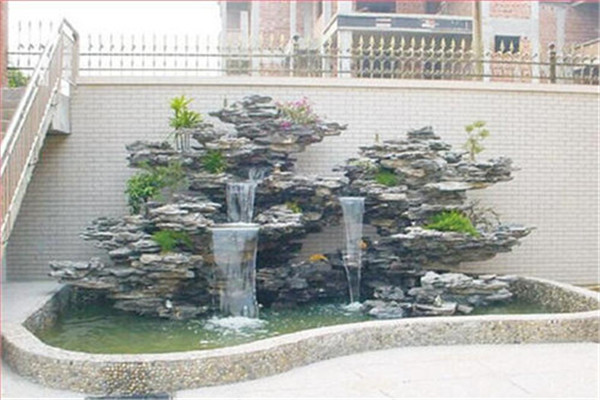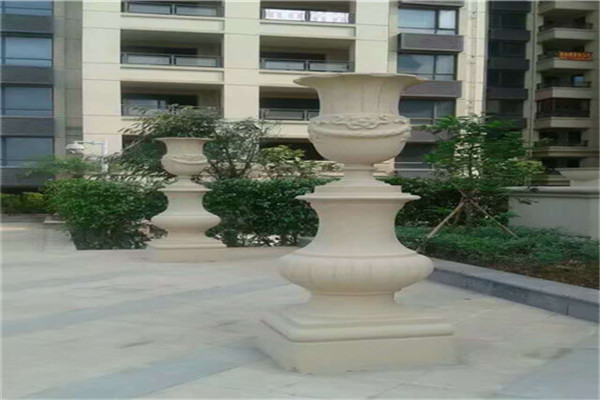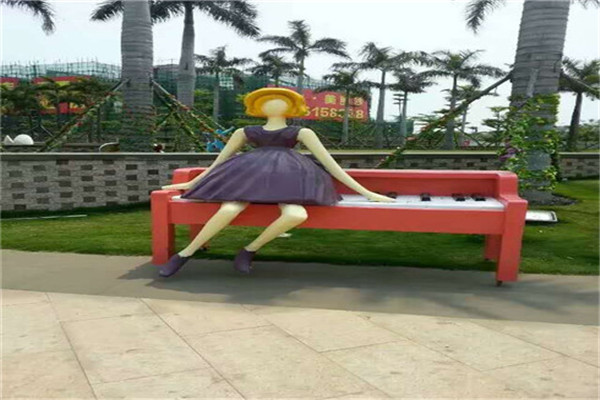
According to the materials, rockeries can be divided into earth mountains, stone mountains, and earth rock mountains (earth is often called earth mountains with stones, and stone is often called stone mountains with stones) According to the construction method, it can be divided into mountain building (block building earth mountain), mountain building (mountain rock piling into a mountain), mountain chiseling (natural rock digging into a mountain) and plastic mountain (traditionally made of lime slurry, modern rockeries made of cement, brick, steel wire mesh, etc., referred to as plastic stone rockery in the industry. The rockery can be divided into garden hill, hall hill, lou hill, pavilion hill, shufang hill, pool hill, indoor hill, wall hill and beast hill according to its location and use in the garden. The combination form of rockery is divided into mountain body and water body. Hainan sculpture mountains include peaks, ridges, peaks, ridges, valleys, gullies, hillocks, walls, rocks, hills, caves, docks, foothills, platforms, walkways and plank roads Water bodies include springs, waterfalls, ponds, streams, streams, ponds, rocks and Tingshi. The landscape should be integrated to complement each other.

The rapid development of urban sculpture has increasingly become an important part of environmental art and the expression of urban image. Sculpture materials are mostly natural stone, artificial stone, wood, metal, cement and new materials such as plastic, rubber, stainless steel, aluminum alloy, gold copper, glass fiber reinforced plastic, etc. In order to cater to the trend of people's "returning to nature", break through the stereotype of traditional sculpture "steel and cement", enrich the environmental space, better protect and beautify the environment, reflect the meaning of sculpture, and make the urban landscape more attractive and cultural and artistic taste, "green sculpture" came into being at the historic moment, quietly sweeping all countries in the world. It refers to the artistic image with different postures and vivid charm, which is carefully cultivated and pruned by various green plants, especially trees. It combines garden and sculpture art, skillfully integrates the theme of "people, animals and nature" into beautifying the urban environment, and has a wonderful effect of shaping a beautiful image of the city and protecting the urban environment. The green sculptures are generally novel in design and rich in meaning. The overall style is beautiful and grand, full of modern flavor. Green sculptures are not only rich in materials, but also can release oxygen needed by human beings, absorb carbon dioxide, purify air, regulate air humidity, and bring health and artistic enjoyment to the city.

Copper casting is an important part of Chinese traditional culture and art. Copper casting has a long history and mature technology. The process of casting copper is more complicated than that of forging copper, and the artistic creation has a good recovery. Therefore, it is suitable for becoming the material of fine works and is very popular with artists, especially figure sculpture. But it is easy to oxidize, so pay more attention to maintenance. Each cast copper artwork is made through 11 complex and rigorous processes, which include traces of traditional handicrafts, lines and modern technology of precision casting. Cast copper is put into the sintering furnace and sintered at 1000 ℃ - 1150 ℃ according to different metal materials. The copper liquid is immediately cast into the ceramic shell. After cooling, the outer ceramic shell is broken, and the copper product rough embryo is peeled out.

Most of the jades mentioned in daily life refer to nephrite, and there are many kinds of nephrite products. Generally, they refer to white sheepskin jade, white jade, topaz, purple jade, black jade, jasper, sapphire, ruby and northeast Xiuyu produced in Xinjiang. In the jade carving, the white jade with sheepskin is fine in texture and strong in luster, as white as sheepskin, which can be called "the king of nephrite" and "the crown of white jade". In addition, Nanyang jade, Lantian jade, Hotan jade, agate, crystal, coral, turquoise, lapis lazuli, etc., all belong to the category of nephrite. Later, due to the opening of the Silk Road, the jade produced in Hotan, Xinjiang, was unanimously recognized and began to play a leading role in the processing of royal, official and folk jade. Nephrite gradually evolved into a synonym for hotan jade.

1. Traditional green sculpture shaping: directly pruning the plants with garden art. There are simple geometric shaping (such as sphere, cube, pyramid, cylinder), complex geometric shaping (layered shaping, spiral shaping, etc.), animal shaping and various peculiar shaping (automobile shaping, aircraft shaping, abstract and free shaping, etc.). Common plants include pine and cypress, privet, boxwood, national locust, elm, etc. 2. Grafting: taking a certain plant as the rootstock, grafting plants with different impressions on it, and then making artistic processing of its shapes, such as polychrome chrysanthemum bonsai, polychrome rose bonsai, polychrome peach, polychrome plum, polychrome crabapple, etc. Such as cliff chrysanthemum, tower chrysanthemum, animal shaped chrysanthemum, etc. 2.1 Single plant green sculpture refers to the sculpture formed entirely by one plant or one plant with multiple colors or by grafting multi-color plants. The sculpture has a long viewing period and simple operation. For example, tree sculptures can be kept for a long time only by special pruning, without considering flower changing and water spraying, and the maintenance management is simple. 2.2 Double plant green sculpture refers to the sculpture shaped by two different kinds of plants. The sculpture has a long viewing period and a strong three-dimensional sense, and usually uses the complementary and mutually reinforcing advantages of two plants for modeling. Such as evergreen and deciduous plants, broad-leaved and coniferous plants, lianas and herbs, as well as different colors, species, branches and leaves, such as leaf color, flowers and fruits, branches and stems. 2.3 Mixed plant green sculpture refers to sculpture with three or more kinds of plants. The sculpture has a short viewing period and complicated operation, but it is highly ornamental and lifelike. The common ones are large three-dimensional sculptures, some animal shaped sculptures elaborately composed of flowers, leaves and fruits of different plants according to design requirements, such as peacock, red crowned crane, panda, etc; Or symbolic sculptures with certain cultural connotation and city image, such as idiom allusion sculptures (learning to walk in Handan, dancing at the smell of chickens), Olympic seal, football World Cup, etc.

The openwork carving technique is an original carving technique in Putian. There are still many "gold inlaid openwork lanterns" and "embossed flower windows" in the Palace Museum in Beijing, which all support the traditional craft charm of Putian wood carving. From the end of the Ming Dynasty to the beginning of the Qing Dynasty to the Republic of China, Putian wood carvings were mostly made of longan wood, which was rich in local production. Tianjin Sculpture hand painting Carved into various military generals, women or gods, antiques, supplemented by cost performance Sculpture hand painting The painting with old lacquer makes the work more deep in color. Zhu Bangshou, Huang Dangui, Chen Xiange and other famous painters, together with Liu Ronglin, formed a round sculpture character style characterized by Pu style military generals. So far, many figures and architectural decoration wood carvings have been left for future generations in Guandi Temple, Yuanxia Village, Jiangkou Town, Jiufeng Village, Wutang Town and other old folk houses, These masterpieces, which combine round, transparent and relief carvings, are treasures of Putian wood carving art.






